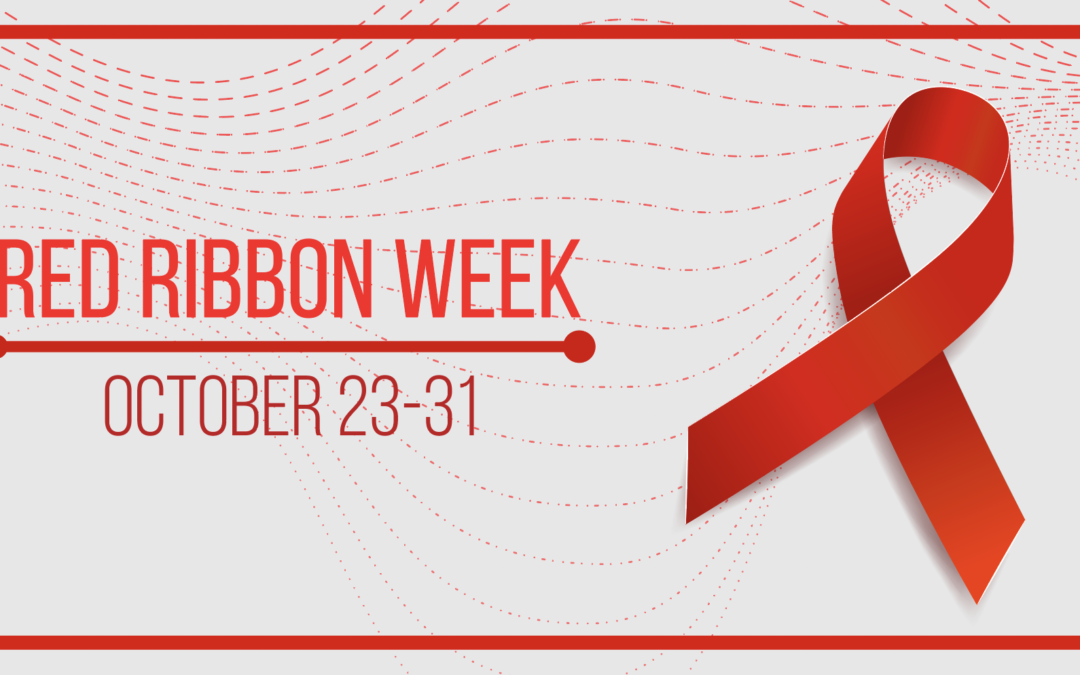Red Ribbon Week, an annual campaign to educate communities on the risks of drug and alcohol use, runs from October 23rd to the 31st. Students engage through dress-up themes, special activities at school, and by wearing red wristbands to show they choose to live drug-free. These activities can be fun, but in high school, students need more education to support healthy decisions. This is a time when many teens begin experimenting with alcohol and drugs, and the impacts can be long lasting.
For teens, a primary objective of Red Ribbon Week should be to educate on the risks of alcohol use. After all, it is the most abused substance among teens with 31% of sophomores and 52% of seniors reporting alcohol use within the past year (California Healthy Kids Survey, 2022).
It can also be the deadliest.
Educating students on the risks of driving under the influence of alcohol and other drugs should also be an objective. According to the Children’s Hospital of Philadelphia Research Institute, teen drivers are less likely than adults to drink and drive, but their crash risk is substantially higher when they do.
So why–despite being educated on its risks–do teens decide to drive drunk?
This could be due to lack of education on the real experiences of teens under the influence of alcohol. Red Ribbon Week education should emphasize that teenagers respond to substances differently than adults do. When under the influence of alcohol, teens will not notice the effects as quickly as adults. Combined with an underdeveloped risk-reward system, deadly consequences can arise.
The second objective of Red Ribbon Week should be to support students’ futures by educating on the long-term impacts of substance abuse.
According to the 2021 National Survey on Drug Use and Health, people who had their first drink prior to turning 15 were 6.5x more likely to develop an alcohol use disorder than those who had their first drink at 21 or older. Additionally, adolescent alcohol use has been associated with mental health disorders such as anxiety and depression and cognitive impairment. The more often one drinks, the more amplified these long-term effects.
Although alcohol may be the most commonly abused substance, high school students also need more education about other substances as well.
Many teens have heard about how marijuana can lead to schizophrenia and other psychological disorders. However, teens may not realize that the biggest risk factor of marijuana use is age. Before 25, the majority of cannabinoid receptors (which THC binds to and slows down the brain) are concentrated in the white matter. Frequent marijuana use can disrupt the development of white matter and affect the brain’s ability to grow new connections, causing impairments in one’s learning ability and problem solving and may affect communication, learning, memory, and emotions.
Some SCHS seniors shared that they would like to learn more about the harmful impacts of steroids. The rise in popularity of fitness influencers has led to a new idealization of “aesthetics” that are sometimes unattainable through hard work alone. While building quick muscle is intriguing, steroid use in teens can lead to stunted growth, acne, damage to organs, high blood pressure, fertility problems, mood swings, aggressive behavior, and depression.
Miles Silva, a senior at San Clemente High School who is an avid gym bro and SCHS Track athlete, shared that he chooses not to use steroids because they can shorten his lifespan. As a high-achieving athlete, he believes that having a long and healthy life should come before athletic performance and that great athleticism is accomplishable without steroids.
The hope is that the risks of substance use will deter students from trying. SCHS seniors Miles Silva, Rhys Brown, and Jade Torres state that the people they surround themselves with make the biggest difference. Having students participate in spirit wear and activities keeps the message at the forefront of our minds for the week, but educating teens on how their brains differ from adults and the short- and long-term effects of drugs and alcohol should be an ongoing discussion.

Ethan Furlong is a senior at San Clemente High School and the Co-President of the Strength in Numbers club. The club focuses on providing education on substance use and mental health, and supporting other students in making healthy decisions.
